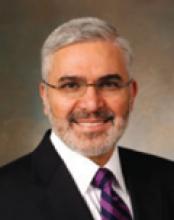What is the future of psychiatric practice? The emerging trend in medicine is toward more and more specialization, but will psychiatry follow suit?
Explosive growth in scientific knowledge and increasingly technical aspects of treatment are making it harder than ever for specialists— let alone generalists—to remain current. Gone are the days of Marcus Welby, MD, television’s 1970s paragon of the “do-it-all” generalist.
Physicians now differentiate into specialists immediately after medical school and train for up to 7 additional years in fields such as psychiatry, surgery, internal medicine, radiology, pediatrics, or dermatology. Even family medicine—an advanced form of “general practice”—requires 3 additional years of post-MD residency. The Accreditation Council for Graduate Medical Education (ACGME) recognizes and regulates residency training in 26 medical specialties.
But the trend does not stop there. Specialists have differentiated further into subspecialists who focus on narrower areas that require additional qualifications. Internal medicine has 18 subspecialties that offer board certification (such as interventional cardiology, gastroenterology, infectious disease, and rheumatology). Psychiatry has 5 (child and adolescent psychiatry, geriatric psychiatry, forensic psychiatry, addiction psychiatry, and psychosomatic medicine).
The ACGME now accredits nearly 100 subspecialties! A unique feature of subspecialty training is that important research takes place in those programs, advancing knowledge at the molecular, translational, and clinical levels.
An emerging practice model. The trend towards subspecialization is likely to continue and could culminate in a “diseasologist” model of medicine. Already, a number of psychiatry “diseasologists” are focusing on only 1 disorder, such as anxiety, bipolar disorder, eating disorders, psychosis, or borderline personality disorders. Similarly:
- In our sister specialty, neurology, some clinicians are focusing on stroke, multiple sclerosis, dementia, movement disorders, or epilepsy.
- Ophthalmology—a superspecialty in its own right—has fractionated into “diseasologists” who restrict their practices to cataracts, vitreo-retinal diseases, corneal disorders, or onco-ophthalmology.
Is the day approaching when there will be 2,000 types of diseasology, one for each recognized medical illness?
In psychiatry, the diseasologist paradigm of clinical practice may be more difficult to implement than in other specialties. Clinical features overlap across many psychiatric disorders, and comorbidity is the rule. We need to maintain “big picture” competence in diagnosis and treatment, being mindful of the “forest” while addressing one or more “trees” with intertwining branches and/or roots.
Psychiatrists may decide to focus on a single major disorder, but we always will need broad-based knowledge of mental disorders. Perhaps we practice “mental primary care,” in which the diseasology model will not be as feasible as in other medical specialties.


